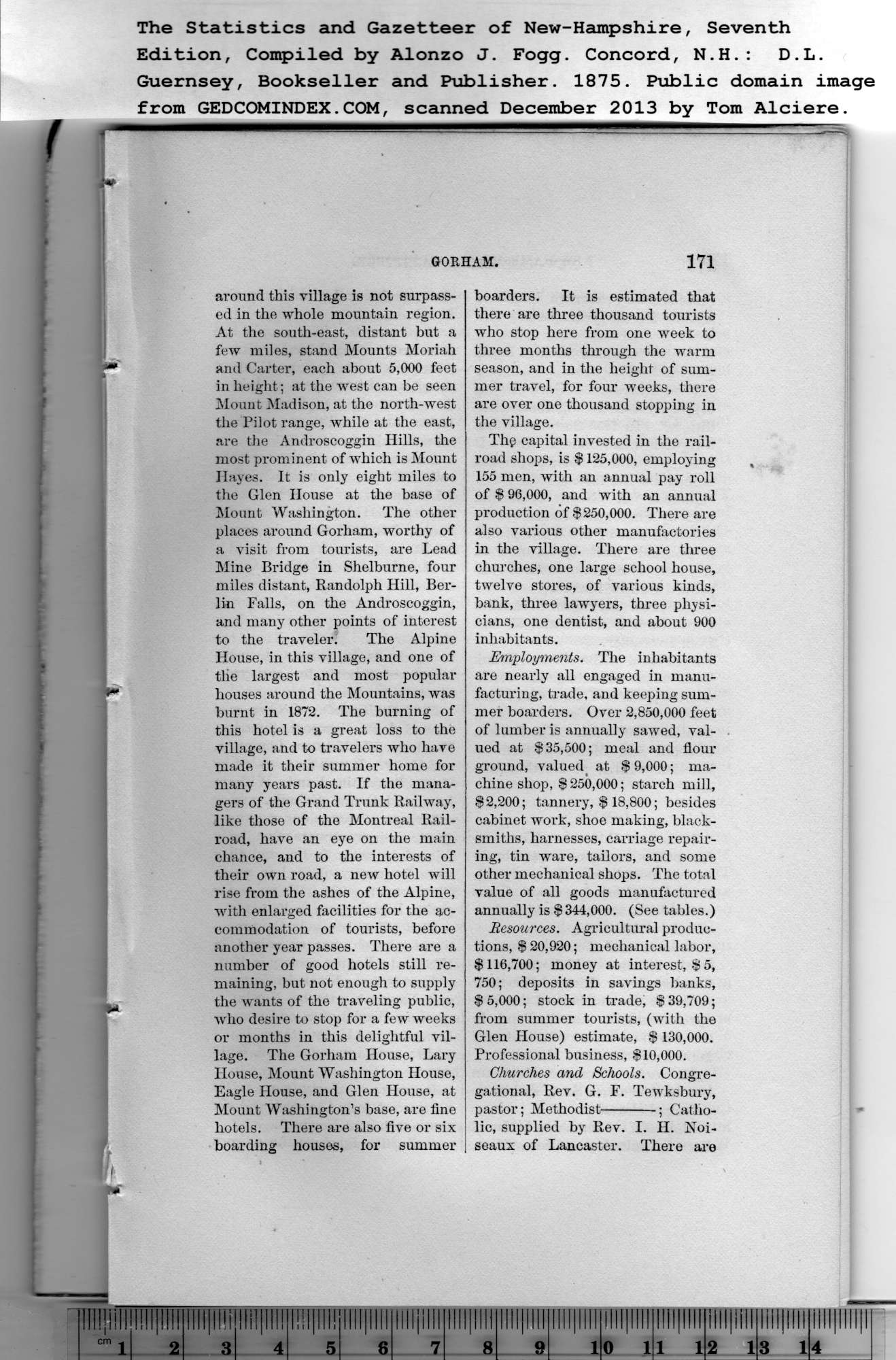|
around this village is not surpass-
ed in the whole mountain region.
At the south-east, distant but a
few miles, stand Mounts Moriah
and Carter, each about 5,000 feet
in height; at the west can be seen
Mount Madison, at the north-west
the Pilot range, while at the east,
are the Androscoggin Hills, the
most prominent of which is Mount
Ilayes. It is only eight miles to
the Glen House at the base of
Mount Washington. The other
places around Gorham, worthy of
a visit from tourists, are Lead
Mine Bridge in Shelburne, four
miles distant, Randolph Hill, Ber-
lin Falls, on the Androscoggin,
and many other points of interest
to the traveler. The Alpine
House, in this village, and one of
tlie largest and most popular
houses around the Mountains, was
burnt in 1872. The burning of
this hotel is a great loss to the
village, and to travelers who have
made it their summer home for
many years past. If the mana-
gers of the Grand Trunk Railway,
like those of the Montreal Rail-
road, have an eye on the main
chance, and to the interests of
their own road, a new hotel will
rise from the ashes of the Alpine,
with enlarged facilities for the ac-
commodation of tourists, before
another year passes. There are a
number of good hotels still re-
maining, but not enough to supply
the wants of the traveling public,
who desire to stop for a few weeks
or months in this delightful vil-
lage. The Gorham House, Lary
House, Mount Washington House,
Eagle House, and Glen House, at
Mount Washington’s base, are fine
hotels. There are also five or six
boarding houses, for summer
boarders. It is estimated that
there are three thousand tourists
who stop here from one week to
three months through the warm
season, and in the height of sum-
mer travel, for four weeks, there
are over one thousand stopping in
the village. |
Thp capital invested in the rail-
road shops, is $ 125,000, employing
155 men, with an annual pay roll
of $ 96,000, and with an annual
production of $250,000. There are
also various other manufactories
in the village. There are three
churches, one large school house,
twelve stores, of various kinds,
bank, three lawyers, three physi-
cians, one dentist, and about 900
inhabitants.
Employments. The inhabitants
are nearly all engaged in manu-
facturing, trade, and keeping sum-
mer boarders. Over 2,850,000 feet
of lumber is annually sawed, val-
ued at $35,500; meal and flour
ground, valued at $ 9,000; ma-
chine shop, $ 250,000; starch mill,
$2,200; tannery, $ 18,800; besides
cabinet work, shoe making, black-
smiths, harnesses, carriage repair-
ing, tin ware, tailors, and some
other mechanical shops. The total
value of all goods manufactured
annually is $ 344,000. (See tables.)
Resources. Agricultui*al produc-
tions, $ 20,920; mechanical labor,
$116,700; money at interest, $5,
750; deposits in savings banks,
$ 5,000; stock in trade, $ 39,709;
from summer tourists, (with the
Glen House) estimate, $ 130,000.
Professional business, $10,000.
Churches and Schools. Congre-
gational, Rev. G. F. Tewksbury,
pastor; Methodist--; Catho-
lic, supplied by Rev. I. H. Noi-
seaux of Lancaster. There are |
